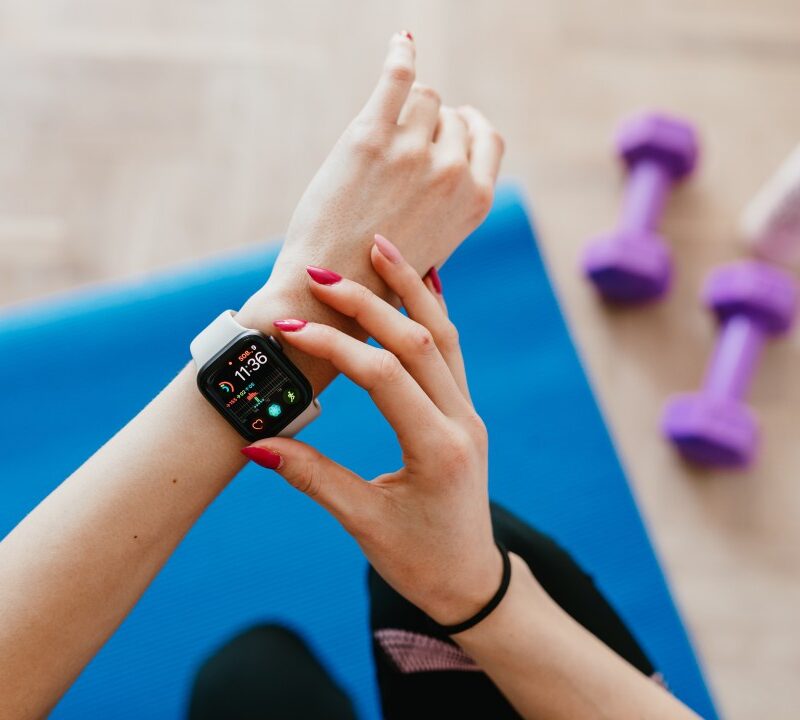Discover 7 game-changing ways to use wearable fitness tech in 2025. Expert tips to maximize your workout results, track progress, and achieve your fitness goals faster.
Read Time: 6 minutes
Last Updated: July 2025
Are you wearing a fitness tracker but still not seeing the results you want? You’re not alone. Wearable fitness tracking technology is the number one projected fitness trend for 2025, with 80% of gym members now expecting digital offerings as part of their workout plans.
But here’s the problem: most people treat their wearable fitness technology like a fancy step counter instead of the powerful transformation tool it actually is. Today, I’m sharing the 7 expert strategies that separate fitness winners from wearable wasters in 2025.
Why Most People Fail with Fitness Wearables
Before diving into the solutions, let’s address the elephant in the room. Despite owning fitness trackers, many people plateau or even gain weight. The issue isn’t the technology—it’s how they use it.
Common mistakes include:
- Focusing only on steps instead of comprehensive health metrics
- Ignoring heart rate zones during workouts
- Not using recovery data to optimize training
- Failing to sync nutrition with activity data
The 7 Game-Changing Wearable Fitness Strategies for 2025
1. Master Your Heart Rate Zones (Not Just Step Count)
Stop obsessing over 10,000 steps. Instead, focus on heart rate zone training for maximum results.
Here’s your action plan:
- Zone 1 (50-60% max HR): Recovery walks, active rest days
- Zone 2 (60-70% max HR): Fat-burning steady cardio (aim for 80% of cardio time here)
- Zone 3 (70-80% max HR): Moderate intensity training
- Zone 4 (80-90% max HR): High-intensity intervals
- Zone 5 (90-100% max HR): Maximum effort sprints
Pro tip: Spend 80% of your cardio time in Zone 2 for optimal fat burning and cardiovascular health. Most people train too hard, too often.
2. Use Sleep Data to Supercharge Recovery
Your wearable fitness technology tracks sleep for a reason—it’s when your body builds muscle and burns fat.
Optimize based on your data:
- Deep sleep under 15%? Reduce evening screen time and keep your bedroom under 68°F
- REM sleep below 20%? Limit alcohol and establish a consistent bedtime
- Sleep efficiency under 85%? Review your pre-sleep routine and stress levels
Recovery hack: If your device shows poor sleep quality, reduce workout intensity by 20% the next day to prevent overtraining.
3. Track Your Resting Heart Rate Trends
Your morning resting heart rate (RHR) is like a daily report card for your fitness and recovery.
What your RHR tells you:
- Decreasing trend: You’re getting fitter! Keep up your current routine
- Sudden spike (5+ bpm): You might be overtraining, stressed, or getting sick
- Consistently high: Time to prioritize recovery and possibly see a doctor
Action step: Check your 7-day RHR average every Monday to adjust your weekly training plan.
4. Leverage Stress Monitoring for Better Workouts
Modern fitness wearables measure stress through heart rate variability (HRV). This is gold for optimizing your training.
High stress readings mean:
- Choose yoga, walking, or light strength training
- Focus on breathing exercises and meditation
- Prioritize sleep and nutrition
Low stress readings mean:
- Perfect time for high-intensity workouts
- Push harder in your strength training
- Try that challenging new workout you’ve been avoiding
5. Sync Your Nutrition with Activity Data
The most successful wearable users don’t just track exercise—they correlate it with nutrition for maximum results.
Smart strategies:
- High-activity days: Increase protein intake by 20-30g to support recovery
- Rest days: Reduce carbs by 25% but maintain protein levels
- Pre-workout: Time carbs 30-60 minutes before based on your workout intensity data
Game-changer: Many wearables now estimate calories burned. Use this to adjust your daily intake, but remember the 80/20 rule—80% nutrition, 20% exercise for weight management.
6. Set Smart, Data-Driven Goals
Generic fitness goals fail. Data-driven goals win.
Instead of “get fit,” try:
- Improve average Zone 2 heart rate by 5 bpm over 8 weeks
- Increase deep sleep percentage from 12% to 18% in 30 days
- Reduce resting heart rate by 3 bpm this quarter
- Achieve 150 weekly active minutes with 80% in optimal heart rate zones
Pro tip: Your wearable’s trends and patterns reveal what’s actually working, not what you think should work.
7. Use Recovery Metrics to Prevent Plateaus
The biggest advantage of wearable fitness technology in 2025 is preventing the overtraining that kills progress.
Watch these recovery indicators:
- HRV trends: Declining variability suggests you need more recovery
- Sleep quality patterns: Poor sleep after workouts indicates overreaching
- Active recovery recommendations: Many devices now suggest optimal recovery activities
Recovery protocol: If 2+ recovery metrics are poor, take a full rest day or do light yoga instead of your planned workout.
The Most Effective Wearables for Different Goals
For Weight Loss:
Focus on devices with accurate calorie tracking and comprehensive sleep monitoring. The data correlation between sleep quality and weight management is crucial.
For Muscle Building:
Choose wearables that track strength training metrics, recovery time between sets, and provide detailed heart rate analysis during resistance training.
For Endurance Sports:
GPS accuracy, advanced heart rate zones, and training load management become priorities.
Common Wearable Mistakes That Kill Results
Mistake #1: Data paralysis – Don’t track everything; focus on 2-3 key metrics that align with your primary goal.
Mistake #2: Ignoring trends – Daily fluctuations are normal; weekly and monthly trends matter most.
Mistake #3: Not adjusting based on feedback – Your device is giving you signals; use them to modify your approach.
Making Wearable Tech Work for Your Lifestyle
The best wearable fitness technology is the one you’ll actually use consistently. Consider your lifestyle:
- Busy professionals: Focus on stress monitoring and efficient workout tracking
- Parents: Prioritize sleep optimization and quick workout metrics
- Athletes: Leverage advanced training load and recovery analytics
Your 30-Day Wearable Transformation Challenge
Ready to stop wasting your wearable’s potential? Here’s your month-long action plan:
Week 1: Master heart rate zone training Week 2: Optimize sleep based on your data Week 3: Implement stress-based workout modifications Week 4: Sync nutrition with activity patterns
The Bottom Line
Wearable fitness technology in 2025 isn’t about having the fanciest device—it’s about using data intelligently to make better decisions. With 128 million Fitbit users and the global wearable device market continuing to expand, those who learn to leverage their data will have a massive advantage.
Stop treating your fitness tracker like expensive jewelry. Start using it like the powerful transformation tool it was designed to be.
Your fittest, strongest, healthiest self is hiding in the data. It’s time to find it.
Frequently Asked Questions
Q: Which metrics should I focus on as a beginner? A: Start with heart rate zones, sleep quality, and resting heart rate trends. Master these three before diving into advanced metrics.
Q: How accurate are calorie burn estimates? A: They’re generally 10-25% off, but the relative changes and trends are valuable for adjusting your nutrition and training.
Q: Should I wear my device 24/7? A: Yes, for the first month to establish baselines. After that, you can take breaks but wear it during workouts and sleep for best results.
Q: My device says I’m overtraining. Should I skip my workout? A: Listen to your body first, but if multiple metrics (HRV, RHR, sleep quality) suggest overtraining, opt for active recovery instead of intense training.







